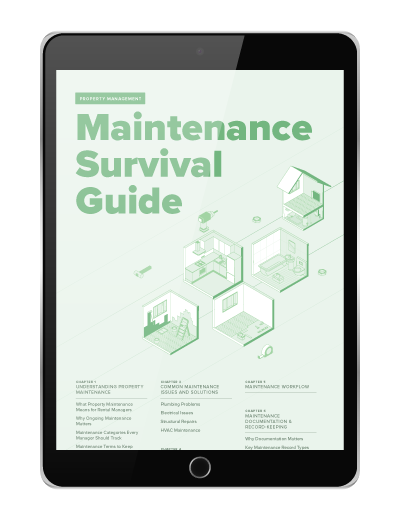Mixed-use developments may have lost their luster in the eyes of some observers due to the retail meltdown of 2017. Last year, many retail locations closed down, and several retail companies went bankrupt due to Americans’ ongoing migration to online shopping.
Given that, are mixed-use developments a good investment in 2018? The answer is yes: They’re still a smart investment, for multiple reasons. However, there are several potential challenges that you should be aware of before you invest in mixed-use developments.
Mixed-Use Developments: Potential Challenges
Despite all of the factors that make mixed-use buildings a good investment, there are some potential drawbacks that investors should keep on their radar.
Complex Development
Building a mixed-use development is more complex than building either a solely commercial or solely residential development. Property managers and developers have to ensure that they meet zoning and other regulatory requirements for both types of use, both in the beginning and as the buildings age. It’s sometimes advisable to work with city planners, managers, or other officials to make sure that the complexity doesn’t result in snags in the process.
Property management firms will also need to recruit and train employees with experience in both types of properties, or work with two managers who are highly collaborative with one another.
Building Issues
Whether the mixed-use development’s buildings are new or are being rehabbed, construction can be a dangerous business. 1 of out of every 10 construction workers are injured each year. Developers and property managers need to ensure that safe and reputable practices are followed, both during construction and during future renovations.
Why Mixed-Use Developments Are a Good Investment
Commercial Establishments Will Never Die
The retail retrenchment of 2017 doesn’t mean that the sky is falling. First, not all commercial tenants in mixed-use developments are retail tenants. Commercial tenants include businesses that employ people but don’t sell to the public, as well as hotels and warehouses. It’s possible to manage a mixed-use development and not have retail stores as tenants.
Second, though, if you do want retail tenants, fear not: People will always do business in retail establishments. One of the residential draws of mixed-use developments is that residents can shop in the nearby stores. They want to try on clothes, for example. They get haircuts. They go out for a night on the town. They go to the dentist. They want a cup of coffee and don’t have time to brew it themselves.
Yes, Americans are shifting to online shopping, but that doesn’t mean death to commercial establishments. It just means that businesses and managers of mixed-use developments need to be smart about determining which businesses are viable in a particular location.
Greater Return on Investment
One of the chief benefits of mixed-use developments is that more rent can be charged on the commercial properties, and thus on the mixed-use development overall. Commercial leases can set rent for 6 to 12 percent of the property’s purchase price. Residential leases range from 1 to 4 percent of the purchase price.
Mixed-Use Buildings Attract Desirable Market Segments
Millennials like mixed-use developments because they appeal to one of their chief values: environmental sustainability. Many mixed-use developments revitalize downtown areas, creating buildings that can be used as both offices and residences. That in itself promotes sustainability, as it repurposes the old and avoids overbuilding on undeveloped land.
With mixed-use developments, Millennials can walk to work, avoiding lengthy, gas-guzzling commutes. They can bike to local parks. They can enjoy urban lifestyles, such as restaurants, artisanal bakeries, and films, which may all be within walking distance. Roughly 67 percent of first-time homebuyers are Millennials, so appealing to them is a smart move.
However, Millennials aren’t the only desirable demographic that finds mixed-use developments attractive. Older residents like them as well. Many senior citizens no longer have children at home, so they are looking for a smaller place to live. The walkability and convenience appeal to them as well. This demographic is growing, so seniors are also an attractive target market.
Commercial Tenants Offer Multiple Advantages
Commercial tenants are businesspeople with significant interest in maintaining their properties. It’s to their advantage to keep properties well-maintained in order to attract the public. While residential tenants may very well maintain their properties as well, property managers well know the stress involved in dealing with problematic tenants. These kinds of issues are much less common with commercial tenants.
Second, commercial leases offer more flexibility to the property managers and owners. In many locales, consumer protections have been enacted for residential tenants. These may limit the amount by which you can increase rent, put restrictions on leases, and make it difficult to evict tenants. Commercial leases rarely have these restrictions.
Third, commercial leases can offer cost savings. Under triple net leases, for example, the lessees are responsible for most expenses, including taxes. This can be to the property manager’s financial advantage.
Fourth, repair and maintenance are limited to business hours with commercial tenants. Residential tenants may call with emergencies or repair requests at any hour of the day or night. With commercial tenants, unless it’s a genuine emergency, maintenance is strictly 9 to 5.
Are mixed-use developments a good investment in 2018? Find out on the #BuildiumBlog! Share on X
Last year saw many retail storefronts close, and some long-time retail companies close for good. However, that doesn’t mean that mixed-use developments are dead. On the contrary, they’re attractive to investors and property managers for many reasons, including higher returns on investment and attractive market segments.
Read more on Industry Research

